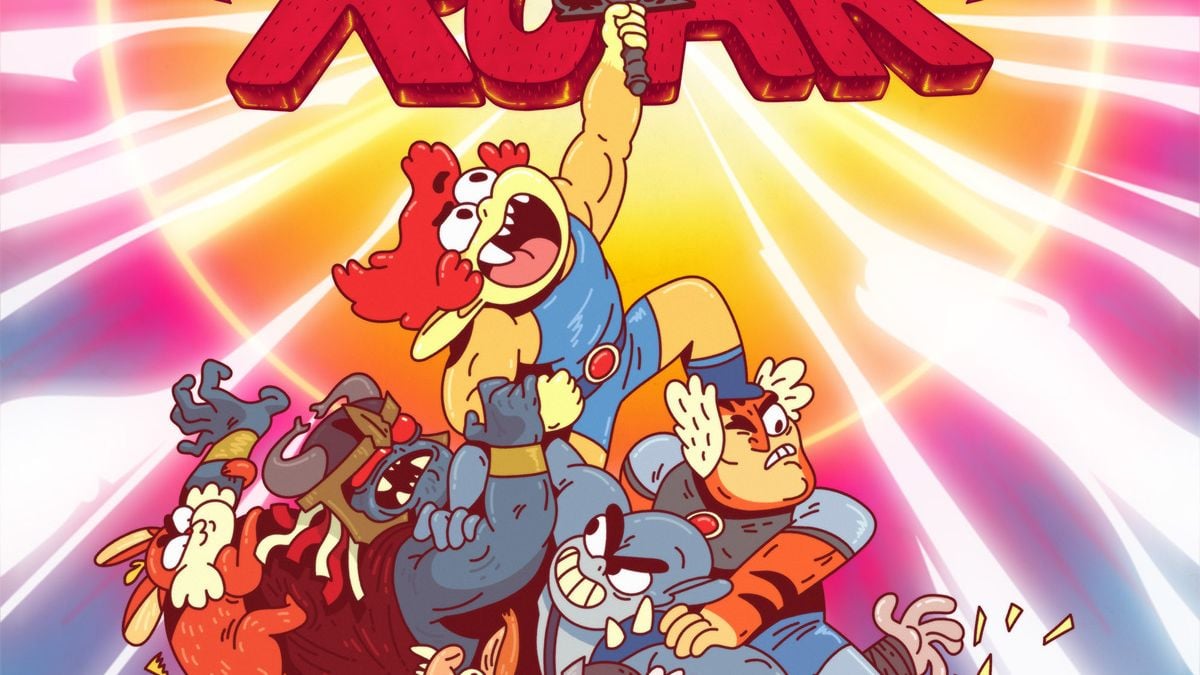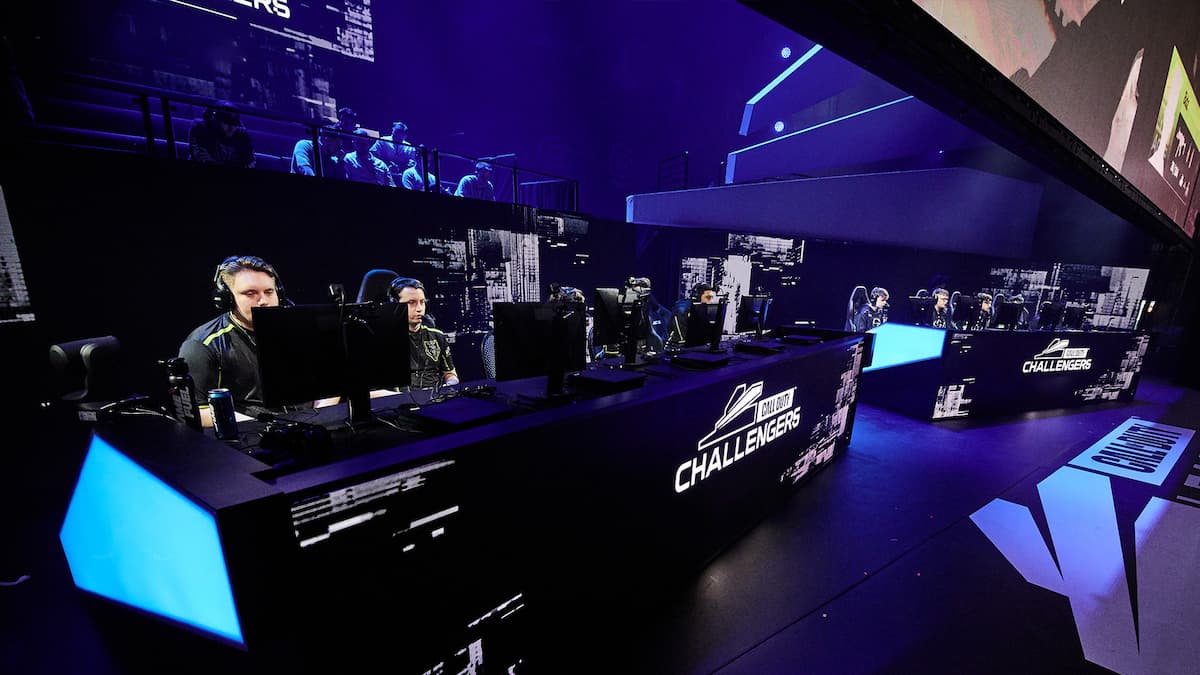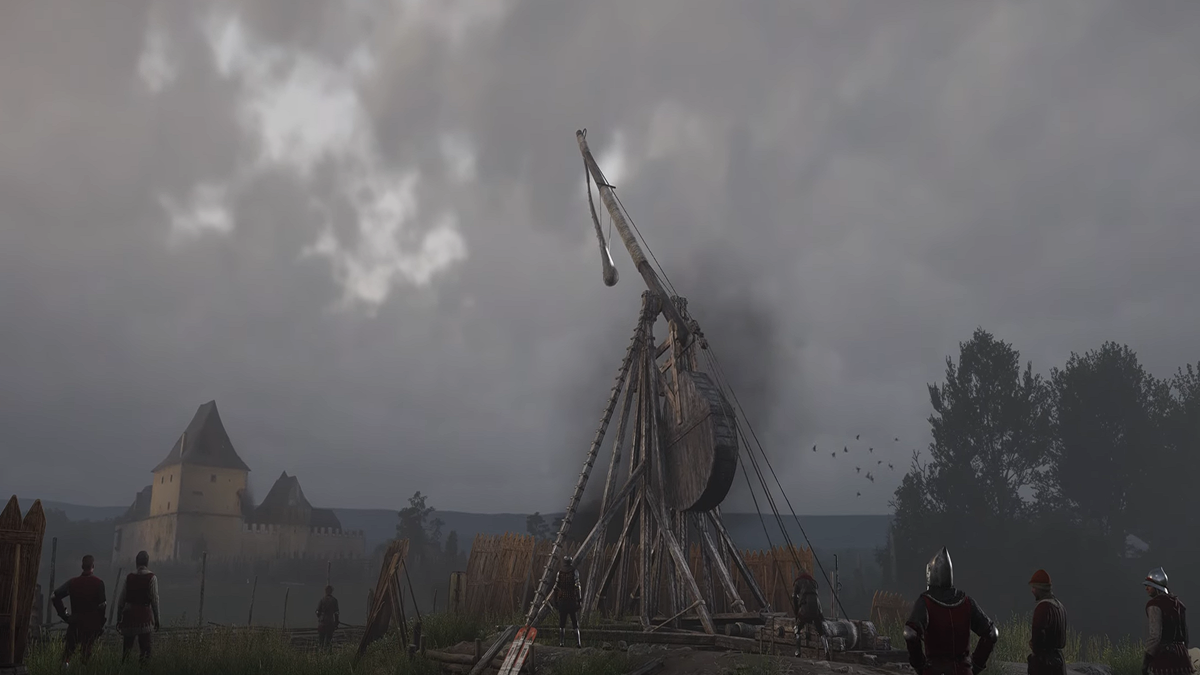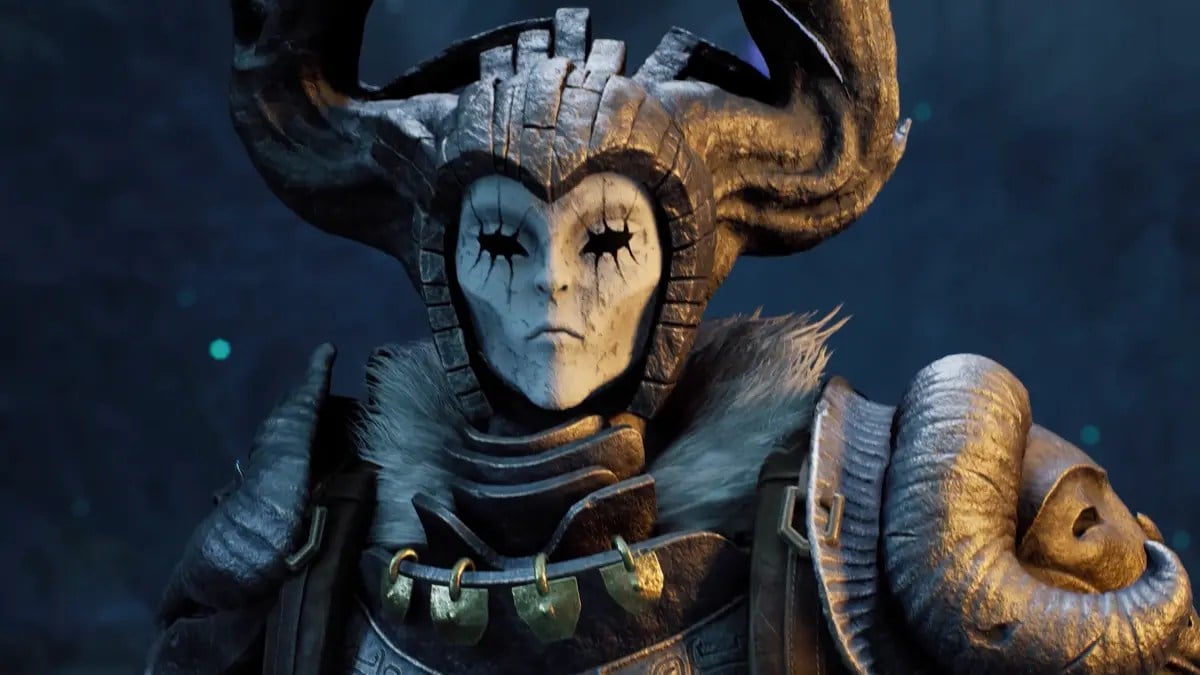How to judge a show before it even airs
For the past couple of days, my newsfeed on Facebook has been ablaze with people talking about the new Thundercats TV show, Thundercats Roar, and none of it has been positive. People have insulted the show for pissing on the legacy of the original series, how much worse modern kids shows are compared to the ones we grew up on, and how American animation has become nothing but garbage. Cartoon Network has pretty much gotten under the skin of anyone that had access to a keyboard that grew up watching the channel in the late ’90s and early 2000s.
I’ve always been a big proponent of animation of what kind of shows/movies kids watch. I always advocate for animation and stories that challenge and teach kids valuable lessons as well as entertain them with goofy and dumb fun. There can be a balance between the styles of kids’ shows. Not every show has to be a super serious show that challenges both adults and kids, just as not every show has to be a dumb comedy that kids can laugh and reference with other kids. The difference is how those products are marketed and whether or not they’re even good for kids. A movie like The Secret Life of Pets may be a silly kids movie, but it at least is not as toxic to a child’s development as The Emoji Movie is. They both are trying to appeal to the same demographics, but one is clearly not as destructive as the other.
So when I’m talking about Thundercats Roar and the reaction to it, I’m taking it from the approach of someone that watches some kids cartoons without a kid, loves anime, goes to see kids movies, and is someone that has been around the block a few times with the modern Cartoon Network. And after a little time to think about it, I firmly believe that people need to calm the hell down about Thundercats Roar and its animation. It isn’t the end of the world, it isn’t the low point in Western animation, and this isn’t the darkest timeline.

First thing’s first, we should probably address the elephant in the room. A bunch of animators and fans online have decried Thundercats Roar not just because it’s a revival of Thundercats, but because it has an animation style referred to as the CalArts Style. Essentially, people are saying that a majority of cartoons nowadays looks like cookie cutter copies of each other because one of the biggest animation colleges in America, CalArts, teaches future animators one method of creating cartoons, then funnels them off to studios to homogenize the American animation industry into one singular style of animation. Most of the biggest cartoons sport the same character designs, facial animation, and are generally indistinguishable between one another. All you need to do is look at this picture just to get what people are talking about with the CalArts style.
Couple things.
Do cartoons nowadays look very similar to each other? Yes they do. They share a lot of visual similarities and it’s hard to deny that. Did cartoons on Cartoon Network a decade ago all sport different visual designs to separate themselves from each other? Again, yeah, they did. Samurai Jack, Powerpuff Girls, Foster’s Home for Imaginary Friends, and The Grim Adventures of Billy and Mandy all were big hits on Cartoon Network, but they had different visual designs to them. Does any of that matter for the overall quality of a show? Absolutely not.
A ton of classic shows feature garbage animation when you actually break them down and look at them. Scooby-Doo and The Flintstones are shows that have really aged visually and never really sported the best animation. But they’ve endured to this day because those shows have great characters with some great writing to them. That applies even more to cartoons nowadays. To belittle Steven Universe, Gravity Falls, and Star vs. the Forces of Evil for having similar animation and character designs means that you’re belittling them for their visuals rather than their content, and all three of those shows are astounding in terms of the narratives they tell.

Gravity Falls frequently features eldritch abominations that enter our reality and weaves together mysteries upon mysteries to entice their viewers. Star vs. the Forces of Evil has some truly great action scenes in a world that deals with historical revisionism and racism between magical humans and monsters. And Steven Universe? That show plays with gender norms, forgiveness, legacy, growing up, responsibility, and a whole host of other important lessons that hit phenomenally well. To say that those shows are lesser because the animation is similar is doing all American cartoons a disservice.
Are the similar visually? Yes, but if we’re going to go through the train of thought that any shows that bear some visual similarity are redundant and lose value because of it, then why aren’t people upset that Matt Groening’s new Netflix series Disenchantment is a visual rip-off of Futurama, which is a visual rip-off of The Simpsons? Is it because it has the same creator that it gets a free pass?
So let’s just table the whole CalArts style discussion because it really doesn’t hold a lot of weight here. What some people are really keen to throw out to bring down Roar is that it took away the seriousness and the legacy of the original series. Now I have never seen either the original Thundercats or the 2011 revival (we’ll get to that later), but I can understand why the shift to comedy would be a problem for some. And honestly, that’s a legitimate issue that people can take with the series… to a point. I will always give the benefit of the doubt to a show or movie that hasn’t aired yet, but it looks like Thundercats Roar is trying to ape the success of Teen Titans Go! and how it differed incredibly from the original 2003 series.

So in a complete stroke of luck, I’ve actually been rewatching all of the 2003 Teen Titans when this whole scandal broke out. Comparing Teen Titans to Teen Titans Go! is hardly fair, seeing as how one show I grew up with and one show I saw only a single season of, but the quality between the two series is shocking. Teen Titans Go! is clearly aiming for a younger demographic and is focused on being a comedy, while the original series has a bunch of comedic episodes, but comedy wasn’t the focus of the original series. It was more focused on showing off the fun villains and using them to explore each of the core Titans and develop them into true heroes.
But, and I can’t believe I’m doing this, Teen Titans Go! isn’t as horrible as people have made it out to be. I wouldn’t call it good, but it has enough stupidity to make it enjoyable for young kids and has a few clever moments in it. And yes, because I just need to remind everyone of this, these shows are aimed at CHILDREN, not adults. Not only that, but it isn’t great to compare Teen Titans Go! to Teen Titans really since they’re both completely different shows in terms of themes and intents. It’s more appropriate to compare it to Foster’s Home for Imaginary Friends, a hyperactive and often annoying kids show about a group of different creatures living together that I watched all the time growing up.
Compared to other kid’s cartoons that are meant to be annoying comedies, Teen Titans Go! isn’t that bad and is actually pretty successful at being this generation’s Foster’s, so of course Thundercats Roar would try to emulate Teen Titans Go!. But television doesn’t exist in a vacuum. Teen Titans Go! may be a comedy, but it will always be inferior to the original series to older fans because of how good that series was. Same with Thundercats Roar. Even if the show turns out to be a massive hit that gets a film adaptation and scores of fans, it’s still going to be tonally at odds with the generation that grew up with the original series and the handful of fans that watched the 2011 reboot. It’s not like the other shows, so it must be inferior. But you have to remember, this is the first exposure to the Thundercats for an entire generation, so there’s no reference point for them.

And speaking of the 2011 reboot, let’s talk about that just for a quick minute. Another reason people have decried Roar is that visually, it’s a massive downgrade from the 2011 series and that its anime-inspired visuals were infinitely superior to the goofy and loose animation of Roar. Fact of the matter is, if people actually watched the 2011 reboot as it aired, then we wouldn’t be in this position. People didn’t tune in to watch the 2011 reboot, so it was cancelled for low viewership. So when people wish that Thundercats Roar looked more like the 2011 reboot, it doesn’t make a difference. People had the chance to watch the show, it didn’t get the viewership it needed, it got cancelled, and now the property is trying a new approach to see if it works. You can’t get mad for a studio trying something new when the last time they tried to innovate no one watched it. Arin Hanson said it best when he said that it was a great show that people didn’t really watch, network bullcrap aside.
All of these comments have been understandable to an extent and it’s been fun just looking at them and seeing the points and counterpoints of each argument. However, the one argument that I just can’t get behind is the direct comparison to anime and how visually Thundercats Roar is inferior to animation being produced in Japan today. One animator made this direct comparison between Violet Evergarden, an anime currently streaming on Netflix, to show off how visually repulsive Thundercats Roar is by comparison.
First off, everything is going to look like crap compared to Violet Evergarden. Have you seen how gorgeous that show is? Second, trying to compare the anime business between American animation is opening up a whole can of worms and I will be the first to admit that I am not the best when it comes to behind-the-scenes info on animated shows. If you want to consult an expert, I highly recommend you read Justin Sevakis’ Answerman articles over at Anime News Network. He knows may more about the production of anime and the business of it than I do and all I know about the subject comes directly from him and his research.

Suffice to say, Violet Evergarden is a series that was in development for, at the very least, a year and a half. When anime are bought in Japan to be produced, they’re bought in cours of 12 or 13 episodes to make sure that the studio has a hit before they go all in on producing a future season. That’s why shows like My Hero Academia and Attack on Titan take major breaks between seasons. The studio wants to make sure it’s a hit, then go all in on producing the shows. Even then, studios take a long time to make a cour in order to make them look as well as they can, and even then the name of the game is time crunch when these shows make it to air. If a show is under a time crunch, the animation and proportion can be wonky and sometimes pathetically lazy. Last year’s Berserk was notorious for its lazy animation, but whether this was due to a mishandled budget or lack of time is unknown.
Violet Evergarden had plenty of time to refine its visuals and make sure everything was on point. Kyoto Animation, also known as Kyo-Ani, is also legendary for making visually spectacular anime on a consistent basis. Contrast that with American animation, where most kids shows are aimed to be syndicated and shown on repeat. Usually, these shows come out with a new episode every week, so episodes are oftentimes under a significant crunch time to make it to air. In some rare cases shows like Gravity Falls are given extremely long breaks between episodes just to let the creators release each episode when they’re perfect, but instances like that are few and far between. Kids shows need to release at a frequent pace because syndication will only support a show for so long, so more content needs to be produced at a faster pace, and if it just so happens that the designs and animation is simple, it can speed up the process incredibly.
Comparing an anime, which usually are given time to breathe between cours, to an American cartoon, which needs to be produced quick and easy, is a bit unfair then. If you wanted to be fair, compare Thundercats Roar to One Piece, another weekly series that needs to be produced on a dime and pumped out as fast as possible. Can One Piece be visually amazing? It can be, but it can also be ugly as sin because it has a deadline to meet every week. The animators sacrifice detail for looser and faster animation just to get it out on time. There’s a method to the madness here.
But if all of that still isn’t enough, then there’s an easy way to show your opinion about the series; don’t watch it. Talking about it now isn’t really going to change much since it’s already in production and is going to come out in 2019. If you don’t have kids, you don’t have to watch it. If you do have kids, then try and watch different shows with them. Hell, even if you don’t have kids, watch shows that look interesting and appealing to you and vote with your viewership. A cartoon called Infinity Train is coming to Cartoon Network in 2019 and I would adore existence if that show got a huge following and overshadowed Thundercats Roar. And if you have no idea what it is, just watch this pilot and be blown away by it.
Personally, though, Thundercats Roar doesn’t look harmful to kids. It’s trying to ape Teen Titans Go! and be another silly cartoon for kids. It doesn’t look insidious like The Emoji Movie and is clearly not aimed at the demographic that is complaining about the visuals. I can’t guarantee it’ll be a good show, but have faith in the animators and the team behind Thundercats Roar. They got paid to do this job for a reason and there are quality animators that are working on this project. Have faith in it. Just don’t go and say that it’s going to suck because you don’t like the animation. You can be wary of its tone, how it treats the legacy of the Thundercats, or if it’s giving off bad messages to kids, but we won’t know that until it airs. Give the animators a chance to impress you with their work. And remember, this show isn’t aimed at us. It’s aimed at a new generation of kids.
And quit it with the whole CalArts style thing. Just… stop it. No bueno.




